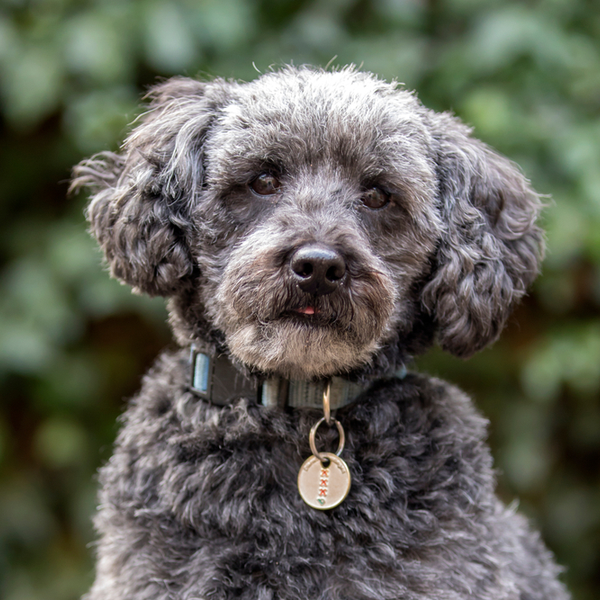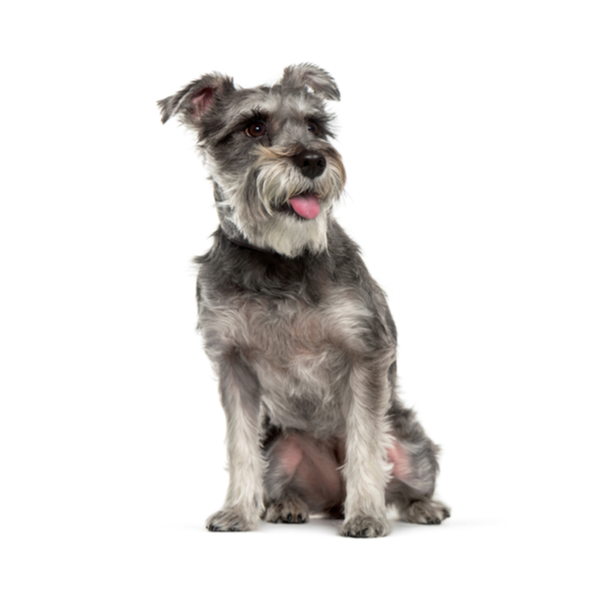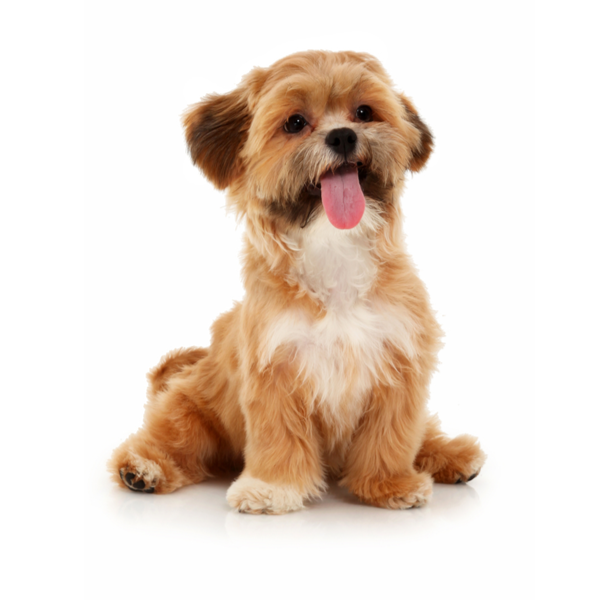
MINIATURE SCHNOODLE PUPPIES
Charming. Affectionate.
Miniature Schnoodles were created by crossing a Schnauzer with a Poodle. They are friendly and happiest in any home with a loving family, no matter the age of the family members. You may find your Schnoodle to play favorites in your family, but it’s a trait they come by honestly from the Schnauzer side of their lineage. The breed was specifically designed to be low-shedding, so they can be a good fit for people with allergies (though there is no such thing as a truly hypoallergenic dog).

Temperament
Because the parent-breed Poodles and Schnauzers are both intelligent, you can expect the same from your Schnoodle. You’ll want to keep these smarties entertained with plenty of interesting toys and a variety of activities to keep them out of mischief.
Schnoodles are alert and affectionate, charming and entertaining. They love spending time with their family and are a little territorial although usually friendly with strangers.
Expect them to be easy to train and to get along well with children and cats. They can be moderately well-behaved with dogs as well.

Appearance
Their coats can vary depending upon the pups’ genetic makeup. Some will be curly like a Poodle; others will be bristly like a Schnauzer. Their colors include:
Mini Schnauzers sport a double coat with a bristly topcoat and a soft undercoat. They come in many colors:
- Chocolate
- Salt and Pepper
- White
- Black
- Parti (white coat with color patches)
- Red
They typically are 12 to 15 inches tall and 13 to 20 pounds.

Exercise
They are highly adaptable and are able to thrive in most home settings, including apartments.
These pups love jogging, playing fetch, wrestling around, or just running around the yard. They can also be talented in agility.
Because they’re so smart, they will need to be mentally challenged along with their physical exercise. When you play games and provide stimulating toys and activities, you’ll bond with your pup and keep them healthy and happy as well.
We recommend 60 minutes of activity per day and about 7 miles of walking per week.
Miniature Schnoodles are a cross between a Miniature Schnauzer and a Poodle. Although crossbreeding has been happening for years, designer breeds like Schnoodles have only become popular in the last twenty years or so. Schnoodles are said to have been created in the 1980s to be a low-shedding, low-dander family companion.
Although this crossbreed’s history isn’t long, its ancestors can be traced back to the 15th century. Poodles were bred in Germany as hunting dogs who excelled at retrieving waterfowl. They were later used in France to smell out truffles, and their intelligence has made them both easily trainable and talented at performing.
The Schnauzer, documented in Germany as early as the 15th century, was bred to work as a barnyard ratter or herder. This breed was advertised as a Wire-haired Pinscher in 1879. One of Germany’s winning show dogs was named Schnauzer, which means “whiskered snout” in German, and that’s how the breed got its name.
Major health concerns to be aware of:
- Progressive Retinal Atrophy
- Addison's Disease
- Legg-Calve Perthes Disease
- Gastric Dilation Volvulus
Minor health concerns to be aware of:
- Ear Infections
- Patellar Luxation
- Cataracts
As with all hybrid dogs, the appearance and maintenance of your Schnoodle will depend upon the pup’s specific genetics. Generally, their fur will be wavy or curly. They should be brushed and combed every few days or at least weekly, and they should be bathed regularly. The breed is prone to developing tear stains, but wiping their face clean daily can help you manage it. You may find that professional grooming every 4 to 6 weeks will keep them looking sharp. Make sure nails are clipped once or twice a month depending on your pup’s level of activity. Ears should also be wiped clean regularly to avoid infection. Finally, brush your pup’s teeth at least two or three times a week, though daily is ideal if you can manage it.




